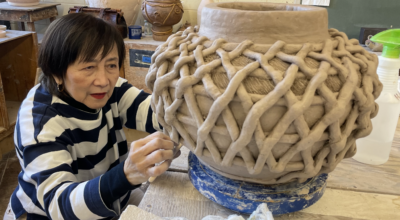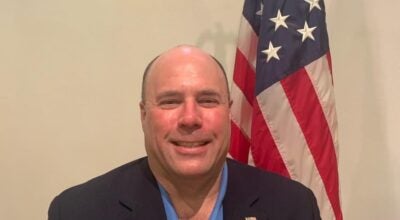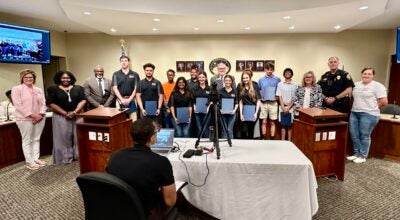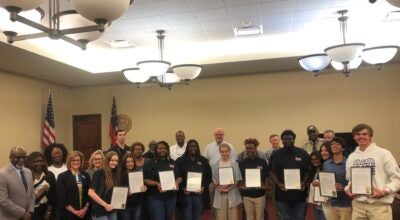The CEO of The Auditory-Verbal Center Addresses Kiwanis
Published 11:56 am Sunday, February 25, 2024
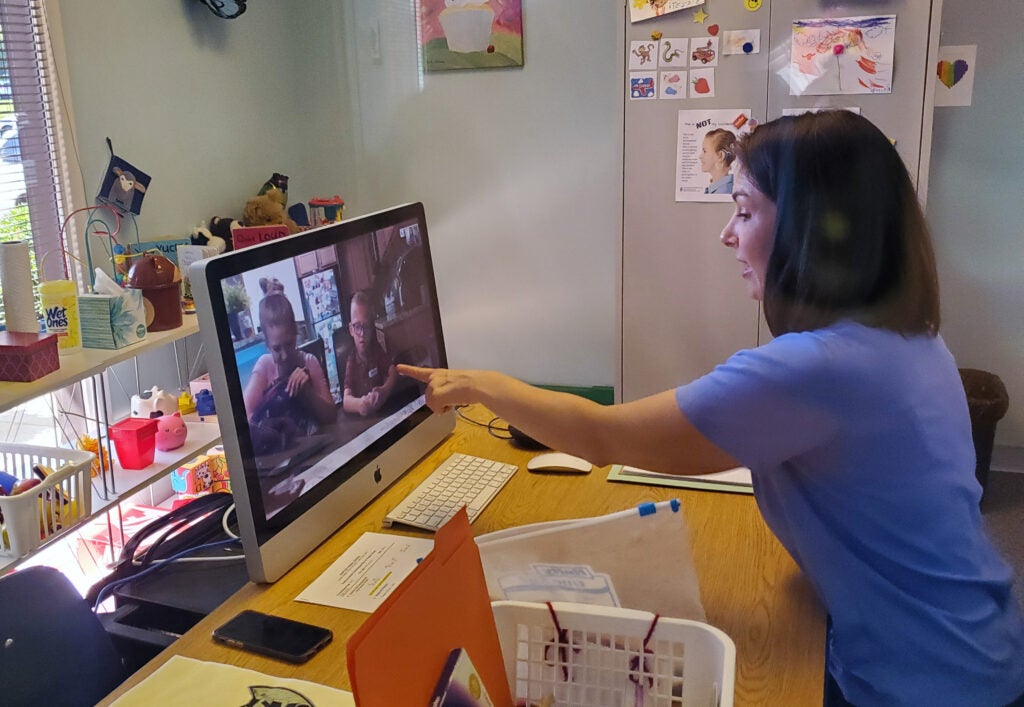
- Therapist with the Auditory-Visual Center teaches speech recognition.
Debbie Brilling, CEO of the Auditory-Verbal Center, addressed the weekly meeting of Kiwanis at the Georgia Southwestern Campus. The Auditory-Verbal Center teaches children with hearing loss to recognize the sounds that make up words via hearing aids and cochlear implants, allowing them to learn spoken language, without the need for sign language. Brilling is passionate about reaching those across the State with their services.
“We have two offices, one in Macon and one in Atlanta. But we started teletherapy back in 2010, so we are able to offer teletherapy to anyone in the State of Georgia.”
She mentioned the necessity of focusing on kids when they are young.
“We’ll work with anybody, but your window of opportunity is birth to about five, and that’s because the auditory cortex of your brain, if it’s not stimulated, will develop atrophy.”
She talked about how learning to identify the sounds that make up speech is important in children who have difficulty hearing, since it allows the auditory portion of their brain to grow.
“So your ears are the pathway or doorway to the brain, and when you get sound, that’s what develops your brain, and that’s where spoken language comes from that develops in your brain.”
She talked about how technology allowed them to reach young children who would otherwise be unable to hear.
“We can put hearing aids on as young as six weeks old.”
She mentioned that despite this, many children have issues that aren’t discovered until later, receiving a diagnosis at one or two years of age.
“At that point it’s a fast track. We need to get them in there, get hearing aids on them, get a cochlear implant if they are profound, and start teaching them to hear and speak.”
Identifying hearing loss is so important that infants are tested in the State of Georgia before they leave the hospital. Brilling outlined the process for identifying infants that need intervention.
“If they refer, you want to go for a follow up within thirty days. If you refer again, or fail again, then you want to get a diagnostic and get fit with hearing aids, and then hopefully into some kind of intervention by six months.”
Brilling gave an example of the process for teaching a child with hearing loss, involving an hour-long session every week with parents.
“Let’s say you have a one-year-old baby, just got diagnosed, got fit with hearing aids, and you’re doing teletherapy. We would send you a tablet, you would log on for your therapy session with your therapist, it’s a one on one.”
She told how parents are sent a list of toys. The therapist shows the parents how to make the sounds that identify the objects so that they can coach their children.
“We’re detecting the sound, discriminating it, identifying it, comprehending it. Everything we do is intentional to be able to develop listening and spoken language.”
While the center will bill insurance and Medicaid, Brilling is committed to reaching as many as possible regardless of income.
“We also take people without insurance, or high deductibles. We offer scholarships for anybody who can’t afford to pay. I will never put a child on a wait list, and I will never ever turn a child away because of money because of that window of opportunity.”
She talked about the amount of money they received from the State of Georgia, and the number of families they were able to reach.
“Our center gets $137,000, and last year we serviced 187 families.”
She mentioned key challenges the Center faces.
“We target your lower income uninsured or underinsured families. Funding is always a huge need for me. But more importantly is educating the public that there [are] options.”
She mentioned that many still believe sign language was the only option for hearing loss, despite advances in technology. Brilling has two children who have profound hearing loss, and detailed how they successfully navigated the challenges using cochlear implants. She talked about the need to educate parents of other options.
“So for me, it’s getting the word out there, letting the people know in the community that there is no reason for a child to live in a silent world. If we can get them young, at birth to four or five years of age, and get them into our program, they can live a normal life in a hearing world in a hearing classroom.”


